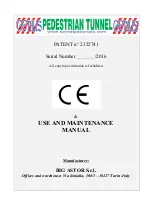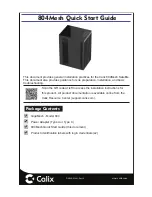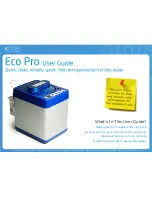
4
L-3571 ENGLISH
D
RAWINGS
AND
D
IAGRAMS
Some equipment may be shipped with specific installation sheets or wiring diagrams that may supersede the information
located in this manual.
REFRIGERATION BASICS
The instructions in this manual apply to all R-404A KRA refrigeration units. Any variations are noted in the text.
Slanted-top KRA condensing units are combination air-and-water-cooled, and the flat-top KRA condensing unit is water-cooled
only. The evaporator section of the refrigeration system may consist of stainless steel plates installed in an insulated box, or
may be copper tubing wrapped around the box, and then insulated.
The system works by removing heat from the refrigerator/freezer compartment (box) and transferring that heat to the outside air
or seawater (depending on the condenser). Removing heat from the box reduces its temperature. However, whenever the
compartment’s door is opened, more heat is introduced into the box from the warmer outside air thus increasing the box
temperature. This added heat must be removed. Heat is also transferred through the walls of the box; proper insulation will
reduce this heat transfer and keep the box cooler for longer periods of time.
The refrigerant used is R-404A. It is EPA approved, but is illegal to vent to the atmosphere. See previous notice.
SYSTEM COMPONENTS
The system consists of two main parts; the condensing unit, and the evaporator section (refrigerator/freezer box). They are
connected by copper lines or flexible hoses. Other parts include the refrigerant expansion valve (externally equalized expansion
valve), thermostat, and seawater system for water-cooled titanium condensers.
WARNING
To avoid possible explosion, death, or injury, practice safe handling of refrigerants.
WARNING
Refrigerants are heavier than air. They can “push out” the oxygen in your lungs or in any enclosed space. To avoid
possible death or difficulty breathing:
•
Never sniff a refrigerant.
•
Never purge refrigerant into an enclosed room or space. All refrigerants must, BY LAW, be reclaimed.
•
If an indoor leak is suspected, thoroughly ventilate the area before beginning work.
•
Liquid refrigerant can be very cold. To avoid possible frostbite or blindness, avoid contact and wear gloves and
goggles. If liquid refrigerant does contact your skin or eyes, get medical help immediately.
•
Never burn refrigerant, as poisonous gas will be produced.
•
Always follow EPA regulations.
WARNING
To avoid possible explosion:
•
Never apply flame or steam to a refrigerant cylinder. If you must heat a cylinder for faster charging, partially immerse it
in warm water.
•
Never fill a cylinder more than 80% full of liquid refrigerant.
•
Never add anything other than R-404A to an R-404A cylinder. Service equipment used must be listed or certified for
R-404A.
•
Store cylinders in a cool, dry place. Never use a cylinder as a platform or a roller.
WARNING
To avoid possible explosion, use only returnable (not disposable) service cylinders when removing refrigerant from a
system.
•
Ensure the cylinder is free of damage which could lead to a leak or explosion.
•
Ensure the hydrostatic test date does not exceed 5 years.
•
Ensure the pressure rating meets or exceeds standard specification of DOT-4BA400.
•
When in doubt, do not use the cylinder.





































